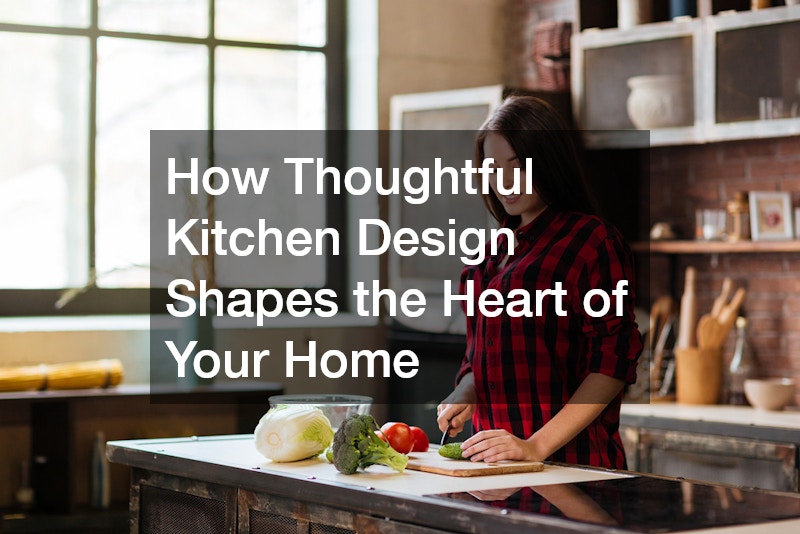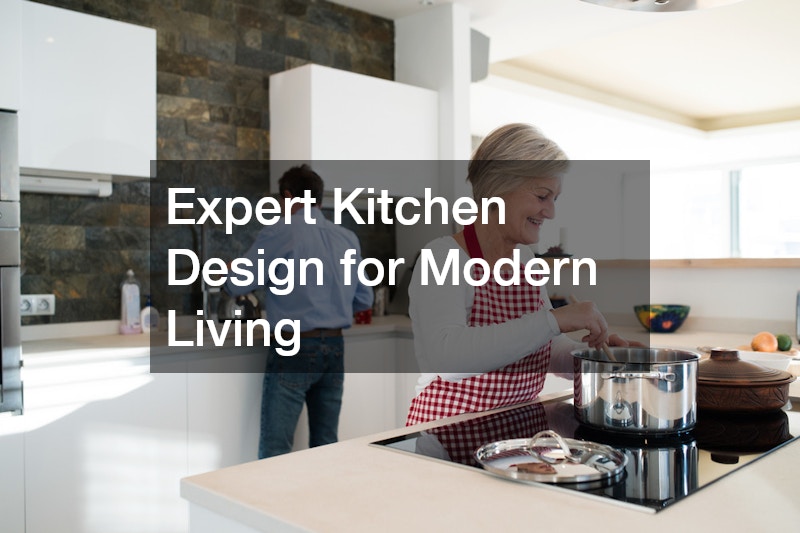The kitchen is often considered the heart of the home, serving as a gathering place for family and friends. Thoughtful design elements not only enhance the functionality of this vital space but also its aesthetic and emotional appeal. This article explores how kitchen design can influence your daily life and well-being.
What Are the Key Elements of Thoughtful Kitchen Design?
In this section, we explore essential features such as layout, workflow, and storage solutions that contribute to a well-designed kitchen.
The layout of a kitchen is fundamental to its usability. A well-thought-out arrangement of work zones, such as cooking, prepping, and cleaning, creates a more efficient workflow.
The placement of essential appliances and tools allows for smooth transitions during meal preparation.
Storage solutions are integral to maintaining an organized kitchen. Cabinets, drawers, and pantry spaces should be strategically designed to accommodate the users’ needs while keeping everything easily accessible. Innovative storage options can turn even the smallest kitchens into functional culinary spaces.
Moreover, the choice of materials and finishes also plays a significant role in kitchen design. High-quality surfaces can withstand the rigors of daily use while adding to the overall style of the kitchen. Combining durability with aesthetic appeal is essential for creating a practical yet inviting cooking environment.
How Can Kitchen Design Enhance Family Interaction?
This section discusses the role of open spaces, seating arrangements, and communal cooking areas in fostering family bonds and social interactions.
An open-concept kitchen encourages family members to gather and connect while preparing meals. Eliminating walls between the kitchen and living areas enhances visibility and engagement, which can foster stronger relationships. Families are more likely to spend quality time together in a cohesive and inviting space.
Seating arrangements play a crucial role in promoting interaction. Kitchen islands and breakfast bars create casual dining experiences, allowing family members to chat and share meals together. Thoughtfully designed seating encourages a sense of belonging and provides a space for informal gatherings.
Communal cooking areas, equipped with multiple workstations, allow family members to participate in meal preparation together. This shared experience can create lasting memories and encourage family traditions. Designing a kitchen to facilitate such activities nurtures bonds that extend beyond the culinary experience.
What Trends Are Shaping Modern Kitchen Design?
In this section, we examine current trends and innovations in kitchen design, including technology integration, sustainable materials, and ergonomic features that cater to contemporary lifestyles.
The integration of smart technology has become a hallmark of modern kitchen design. From voice-activated appliances to smart refrigerators that can manage grocery lists, technology enhances convenience for everyday tasks. Such innovations are transforming the kitchen into a tech-savvy space that meets today’s fast-paced lifestyle.
Sustainability is another key trend shaping kitchen design. The use of eco-friendly materials not only benefits the environment but also appeals to homeowners seeking to minimize their ecological footprint. Green kitchens, featuring recycled materials and energy-efficient appliances, create a healthier living space for families.
Ergonomic design is increasingly prioritized in modern kitchens. Features such as adjustable shelving, pull-out drawers, and easy-to-reach cabinets minimize strain and enhance usability. A kitchen designed with ergonomics in mind can help reduce fatigue and make cooking a more enjoyable experience.
How Does Color and Lighting Affect Kitchen Atmosphere?
This section looks at the psychological impact of color choices and lighting design on the mood and usability of the kitchen space.
Color can significantly impact the ambiance of a kitchen. Warm colors like red and orange can create energy, while cooler colors like blue and green can evoke calmness. The strategic use of color not only affects mood but also influences how spacious a kitchen feels.
Lighting plays a critical role in the functional aspect of kitchen design. Layers of lighting from ambient, task, and accent sources can enhance visibility and safety. Properly chosen lighting can also highlight architectural features and decorative elements, adding depth and personality to the space.
The combination of color and lighting can inspire creativity in the kitchen. Thoughtful selection can create an inviting atmosphere that encourages experimentation, cooking, and socializing. By meticulously crafting these elements, homeowners can significantly elevate their kitchen experience.
Thoughtful kitchen design is more than just aesthetics; it plays a crucial role in the functionality and emotional warmth of the home. By considering various design elements, homeowners can create a kitchen space that not only meets their needs but also enriches their lives.



